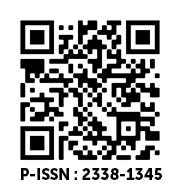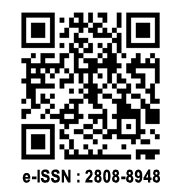Fall armyworm, Spodoptera frugiperda (J.E. Smith) damage on rice in the Philippines
DOI:
https://doi.org/10.36782/apjsafe.v11i2.233Keywords:
Fall armyworm, Rice, Damage, Seedbeds, Invasive spcies, Spodoptera frugiperda, PhilippinesAbstract
Fall armyworm (FAW), Spodoptera frugiperda (J.E. Smith) (Lepidoptera: Noctuidae) is a global invasive pest of corn, and is also common on sorghum, rice and millets, and is reported to be a larval host of 353 cultivated and uncultivated plants . FAW, a native to the tropical and subtropical regions of north, Central, and South America, continues to rapidly spread to Africa and Asia since 2016, threatening food security worldwide . In the Philippines, its first damage on corn was reported in June 2019 in Piat, Cagayan , while that on rice was in May 2021 in Gonzaga, Cagayan, and subsequently to other municipalities in Region 2 . Unlike corn, however, little is known about FAW damage and host preference for rice in the Philippines. Rice, a key food security crop for the Philippines and in Asia, is amongst the key host of the FAW elsewhere (e.g., USA) . The injury that the FAW will inflict in the rice plant should be known and assessed to quantify the potential yield losses, and predict when an intervention is necessary to avoid incurring potential yield losses. With this background, we conducted FAW monitoring and damage assessment in the areas reported to have FAW occurrence starting May 2021. During 2021 and 2022 assessment periods, monitoring was conducted during the months of May, June, and July. However, starting January 2023, the monitoring and damage assessments were conducted monthly with the exception for May and June wherein it was done weekly since these months coincided with the seedling stage of the rice in a majority of rice-growing areas in the Philippines and where FAW attack was reported during the previous years. FAW larval population and damage were assessed in rice seedbeds. The number of FAW larvae were counted and visual damage was estimated in a 1 m2 quadrat with three replicates.
Downloads
References
Montezano DG, Specht A, Sosa-Gomez DR, Roque-Specht VF, Sousa-Silva JC, de Paula-Moraes SV, Peterson JA and Hunt T. 2018. Host Plants of Spodoptera frugiperda (Lepidoptera: Noctuidae) in the Americas. African Entomology 26(2): 286-300. https://doi.org/10.4001/003.026.0286
Navasero MV, Navasero MM, Burgonio GAS, Ardez KP, Ebuenga MD, Beltran MJB, Bato MB,
Gonzales PG, Magsino GL, Caoili BL, Barrion-Dupo ALA and Aquino MFGM. 2019. Detection of the fall armyworm, Spodoptera frugiferda (J.E. Smith) (Lepidoptera: Noctuidae) using larval morphological characters, and observations on its current local distribution in the Philippines. Philipp Ent 33(2):171-184. https://www.researchgate.net/publication/338402159_
Pantoja A, Smith, C. M. and Robinson, J. F. 1986. Effects of the fall armyworm (Lepidoptera: Noctuidae) on rice yields. Journal of Economic Entomology, 79 (5): 1324–1329. https://doi.org/10.1093/jee/79.5.1324
Valdez EM, Rillon GS, Donayre DKM, Martin EC, dela Cruz KB, Sandoval FR, Joshi RC, Quilang EJP, Faheem M, S Annamalai 2021. Fall Armyworm (Spodoptera frugiperda) (J.E. Smith): A first record of damage on rice in the Philippines. Poster paper presented during the Online International Conference “Developing smallholder-oriented IPM strategies for fall armyworm management”, organized by CIFOR-ICRAF, 24–25, August 2021. https://virtual.oxfordabstracts.com/#/event/2329/poster-gallery/grid
Valdez EM, Joshi RC, Rillon GS, Donayre DKM, Martin EC, dela Cruz KB, Sandoval FR, Quilang EJP, Aquino MF, Mariano J, Pascual MK, Faheem M and Annamalai S. 2023a. Rice: A new host of fall armyworm Spodoptera frugiperda (J.E. Smith) and its strains in the Philippines. Insect Environment 26(2): 129-136. https://img1.wsimg.com/blobby/go/e32c3452-4e91-4d33-bdd5-d2fe34246a6c/downloads/7.%20Evelyn%20M.%20Valdez.pdf?ver=1689143065213








